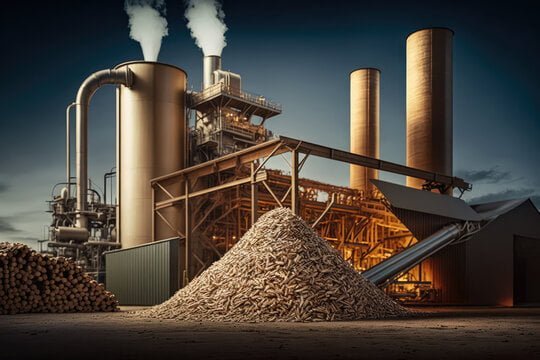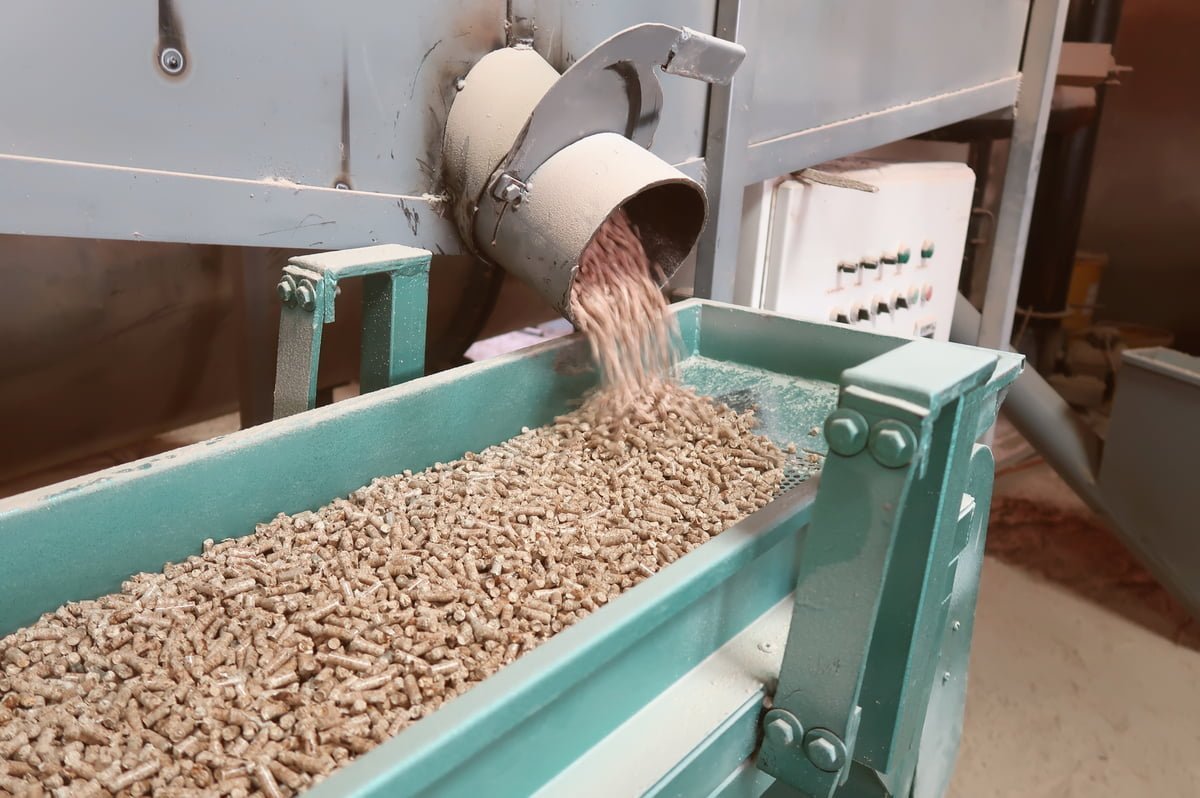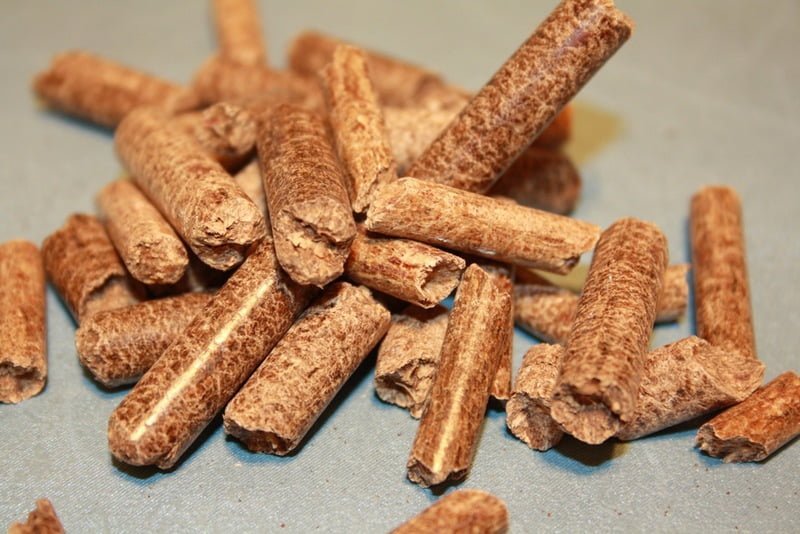Power Plant Fuel Optimization: Blending Vietnamese wood pellets offers power plants a strategic advantage by optimizing fuel composition for peak performance, balancing factors like energy density, moisture content, and ash composition to enhance combustion efficiency and reduce emissions.
Unlocking the Power of Vietnamese Wood Pellets: Power Plant Fuel Optimization for Maximum Efficiency
Vietnamese wood pellets have gained significant attention as a sustainable and efficient fuel source in recent years. As the world continues to search for alternative energy options to reduce carbon emissions and combat climate change, the use of wood pellets has emerged as a viable solution.
This article will explore the benefits of using Vietnamese wood pellets for fuel, the properties that make them optimal for performance, factors affecting their efficiency, proper storage and handling techniques, … and the future potential of Vietnamese wood pellets as a sustainable and efficient fuel source.
The Benefits of Using Vietnamese Wood Pellets for Fuel
One of the key benefits of using Vietnamese wood pellets as a fuel source is their lower carbon emissions compared to fossil fuels. Wood pellets are made from compressed sawdust and other wood waste materials, which are renewable resources. When burned, they release carbon dioxide (CO2), but this is offset by the fact that the trees used to make the pellets absorb CO2 during their growth. This makes wood pellets a carbon-neutral fuel source.
In addition to being renewable and sustainable, Vietnamese wood pellets are also cost-effective compared to other fuel sources. The cost of wood pellets is generally lower than that of fossil fuels such as oil or natural gas. This makes them an attractive option for businesses and industries looking to reduce their energy costs while also reducing their environmental impact.
Furthermore, Vietnamese wood pellets have a high energy density and consistent quality. This means that they provide a significant amount of heat per unit of weight or volume. The consistent quality ensures that the pellets burn efficiently and produce a consistent amount of heat. This makes them an efficient fuel source for heating systems and industrial processes.
Understanding the Properties of Vietnamese Wood Pellets for Optimal Performance

To fully understand the benefits and advantages of Vietnamese wood pellets as a fuel source, it is important to understand their properties and characteristics. Vietnamese wood pellets are typically made from a combination of sawdust, wood chips, and other wood waste materials. These materials are compressed under high pressure to form small cylindrical pellets.
The composition and characteristics of Vietnamese wood pellets play a crucial role in their performance as a fuel source. The pellets have a low moisture content, usually below 10%. This ensures that they burn efficiently and produce a high amount of heat. High moisture content can lead to incomplete combustion and reduced energy output.
Another important property to consider is the ash content of the pellets. Vietnamese wood pellets have a low ash content, typically below 3%. This means that they produce minimal ash when burned, reducing the need for frequent cleaning and maintenance of equipment.
The calorific value and energy density of Vietnamese wood pellets are also important factors to consider. The calorific value refers to the amount of heat produced by burning a specific amount of fuel. Wood pellets have a high calorific value, which means that they provide a significant amount of heat per unit of weight or volume. The energy density refers to the amount of energy stored in a given volume or weight of fuel.
Wood pellets have a high energy density, which means that they can provide a large amount of heat in a compact form.
Factors Affecting the Efficiency of Vietnamese Wood Pellets as Fuel
While Vietnamese wood pellets offer numerous benefits as a fuel source, their efficiency can be affected by various factors. One of the key factors is the quality of the pellets themselves. High-quality pellets with low moisture content and minimal impurities will burn more efficiently and produce more heat. It is important to source pellets from reputable suppliers who adhere to strict quality control standards.
The equipment used for burning Vietnamese wood pellets also plays a crucial role in their efficiency. Pellet stoves, boilers, and furnaces are specifically designed to burn wood pellets and maximize their energy output. It is important to choose the right equipment for the specific application and ensure that it is properly maintained and serviced.
Air flow and temperature control are also important factors to consider. Proper air flow ensures that the pellets burn efficiently and produce a consistent amount of heat. Temperature control helps to optimize combustion and prevent overheating or underheating. It is important to follow the manufacturer’s guidelines for air flow and temperature settings and regularly monitor and adjust them as needed.
Regular maintenance of equipment is another factor that can affect the efficiency of Vietnamese wood pellets as fuel. Cleaning and inspecting the equipment on a regular basis helps to prevent clogs, blockages, and other issues that can reduce efficiency. It is also important to replace worn or damaged parts to ensure optimal performance.
How to Properly Store and Handle Vietnamese Wood Pellets for Maximum Efficiency

Proper storage and handling of Vietnamese wood pellets are essential for maintaining their quality and maximizing their efficiency as a fuel source. The pellets should be stored in a dry and well-ventilated area to prevent moisture absorption, which can lead to degradation and reduced energy output. It is recommended to store the pellets in airtight containers or bags to protect them from moisture.
When handling Vietnamese wood pellets, it is important to avoid dropping or crushing them, as this can lead to damage and reduced efficiency. The pellets should be handled gently and stored in a way that prevents them from being exposed to excessive pressure or impact.
Choosing the Right Equipment for Burning Vietnamese Wood Pellets
Choosing the right equipment for burning Vietnamese wood pellets is crucial for maximizing their efficiency as a fuel source. There are several types of equipment available, including pellet stoves, boilers, and furnaces. The choice of equipment depends on factors such as the size of the space being heated, the desired heat output, and the specific application.
When choosing equipment, it is important to consider factors such as the efficiency rating, the size and capacity of the equipment, and the availability of maintenance and support services. It is also important to choose equipment that is compatible with Vietnamese wood pellets and has been specifically designed for their combustion.
Tips for Proper Maintenance of Equipment Used for Burning Vietnamese Wood Pellets
Proper maintenance of equipment used for burning Vietnamese wood pellets is essential for ensuring optimal performance and efficiency. Regular cleaning and inspection of the equipment helps to prevent clogs, blockages, and other issues that can reduce efficiency. It is recommended to clean the equipment at least once a year or as recommended by the manufacturer.
In addition to regular cleaning, it is important to replace worn or damaged parts to ensure optimal performance. This includes components such as gaskets, seals, and igniters. It is also important to lubricate moving parts and check for any signs of wear or damage.
Regular servicing by a qualified technician is also recommended to ensure that the equipment is functioning properly and to address any potential issues before they become major problems. It is important to follow the manufacturer’s guidelines for maintenance and servicing and keep a record of all maintenance activities.
Best Practices for Combustion of Vietnamese Wood Pellets for Maximum Efficiency
To achieve maximum efficiency when burning Vietnamese wood pellets, it is important to follow best practices for combustion. Proper air flow and temperature control are key factors in optimizing combustion. It is important to follow the manufacturer’s guidelines for air flow settings and regularly monitor and adjust them as needed. This helps to ensure that the pellets burn efficiently and produce a consistent amount of heat.
Using high-quality pellets is another best practice for combustion. High-quality pellets with low moisture content and minimal impurities will burn more efficiently and produce more heat. It is important to source pellets from reputable suppliers who adhere to strict quality control standards.
Regular maintenance of equipment is also crucial for achieving maximum efficiency. Cleaning and inspecting the equipment on a regular basis helps to prevent clogs, blockages, and other issues that can reduce efficiency. It is also important to replace worn or damaged parts to ensure optimal performance.
The Role of Air Flow and Temperature Control in Optimizing Vietnamese Wood Pellet Combustion
Proper air flow and temperature control play a crucial role in optimizing the combustion of Vietnamese wood pellets. Air flow refers to the amount of air that is supplied to the combustion chamber. Too little air can result in incomplete combustion and reduced energy output, while too much air can lead to excessive heat loss and reduced efficiency.
Temperature control helps to optimize combustion and prevent overheating or underheating. The temperature of the combustion chamber should be maintained within a specific range to ensure efficient and complete combustion. This range may vary depending on the specific equipment and application.
It is important to follow the manufacturer’s guidelines for air flow and temperature settings and regularly monitor and adjust them as needed. This helps to ensure that the pellets burn efficiently and produce a consistent amount of heat.
Case Studies: Successful Applications of Vietnamese Wood Pellets for Fuel

There are numerous examples of businesses and industries using Vietnamese wood pellets for fuel with great success. One such example is a large-scale power plant in Vietnam that has converted from coal to wood pellets as a fuel source. This switch has resulted in significant reductions in carbon emissions and has helped the plant meet its sustainability goals.
Another example is a furniture manufacturing company that uses wood pellets as a fuel source for its drying kilns. The company has seen a significant reduction in energy costs and has been able to market its products as being produced using sustainable and environmentally friendly practices.
These case studies highlight the benefits and outcomes of using Vietnamese wood pellets as a fuel source, including cost savings, reduced carbon emissions, and improved sustainability.
The Future of Vietnamese Wood Pellets as a Sustainable and Efficient Fuel Source
In conclusion, Vietnamese wood pellets offer numerous benefits as a sustainable and efficient fuel source. They have lower carbon emissions compared to fossil fuels, are renewable and sustainable, cost-effective, and have a high energy density and consistent quality. Understanding the properties of Vietnamese wood pellets is crucial for optimizing their performance, and factors such as the quality of the pellets, the equipment used for burning them, air flow and temperature control, and maintenance of equipment all play a role in their efficiency.
Proper storage and handling techniques, choosing the right equipment, and regular maintenance are essential for maximizing the efficiency of Vietnamese wood pellets as fuel. The role of air flow and temperature control in optimizing combustion cannot be overstated, and following best practices for combustion is crucial.
Successful case studies demonstrate the potential for increased use and adoption of Vietnamese wood pellets as a sustainable and efficient fuel source. As the world continues to search for alternative energy options to reduce carbon emissions and combat climate change, Vietnamese wood pellets have emerged as a viable solution. With their numerous benefits and advantages, Vietnamese wood pellets have a bright future as a sustainable energy source.
Originally posted 2024-02-25 10:46:27.



